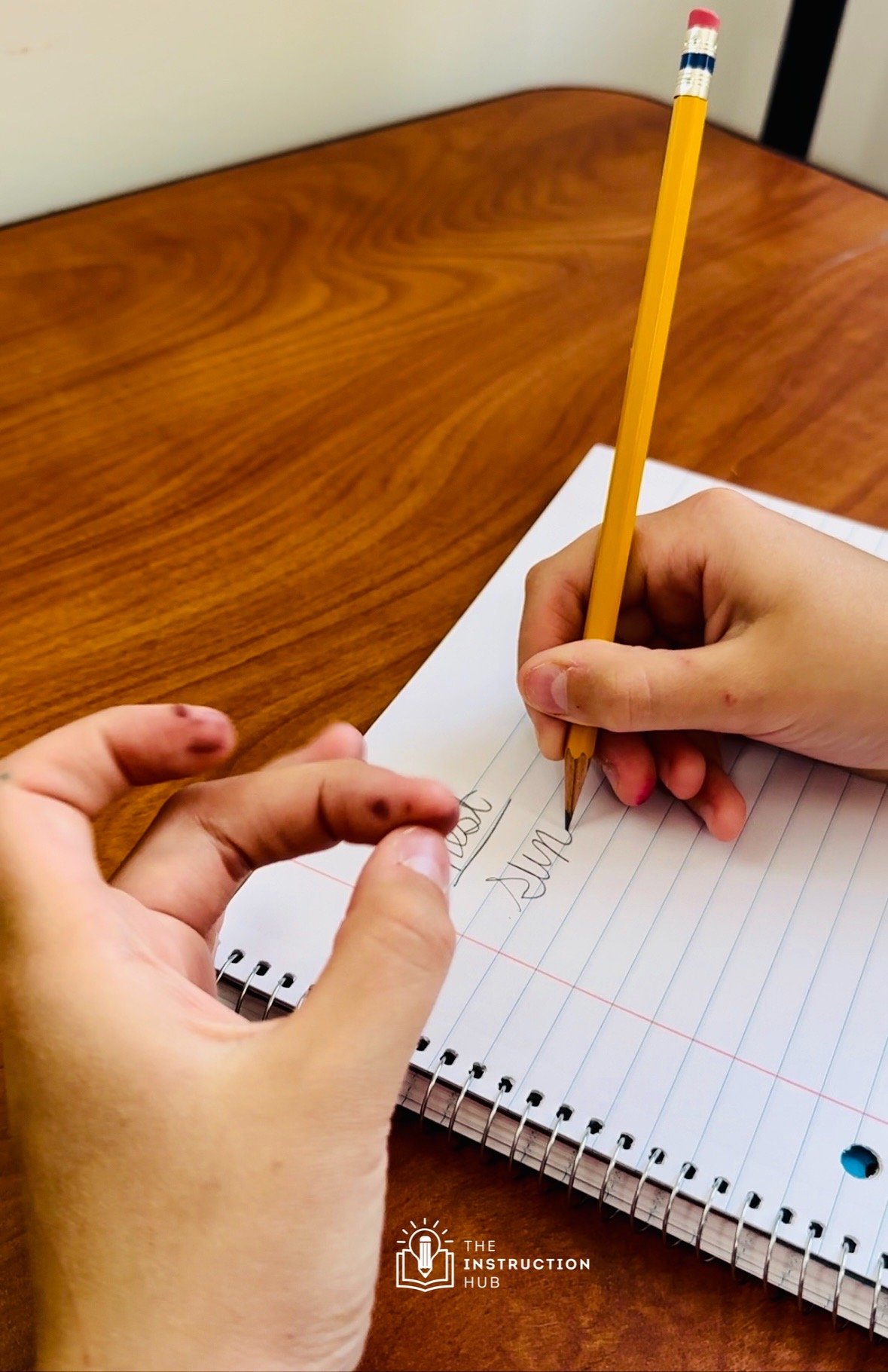3 Must Try Spelling Tips
If you have a program that is teaching reading directly and explicitly but is not teaching spelling directly and explicitly, they are not providing maximum effective language instruction.
As one of my mentors used to say, “reading and spelling are two sides of a coin.” They go together and should be taught together.
Spelling is often harder than reading. I have had several students who would have flown under the radar with their difficulties with language because they read fairly well, but it was the spelling that gave them away. I encourage my course participants and mentees always to assess spelling and progress monitor spelling. Spelling makes a great informal assessment to support your prescriptive instructional decisions.
When considering a structured approach to spelling, students would be provided direct and explicit instruction in sound-symbol relationships, syllable types, and spelling generalizations. Students need support in learning and engaging phonological (sound) and orthographic (spelling) knowledge. Although syllabication is often the primary tool for beginning reading and spelling, morphology instruction can also be impactful for building an understanding of spelling as well. As The Gillingham Manual describes, the instructor should “present spelling as a thinking subject.”
If we apply this idea, we want to provide strategies that allow students to take their knowledge and use it to think through spelling. Let’s look at three strategies that would support a student.
Echo, Tap, Write
I use this strategy with single-syllable words. I have the student watch me as I dictate the word. I have the student echo the word. *Tip: if they have trouble articulating the word or have confusion with similar-sounding words, I will have them watch themselves say the word in a small handheld mirror. I then have the student use their non-writing hand to tap the sounds of the word from left to right on their fingertips. It is important that the student watches their fingers as they sequence the sounds. If you are new to finger-tapping, you can browse my social media posts for videos and samples. The student can write at two different points depending on their needs. They can tap a sound and then write it, tap the next sound and write it, and so on. Secondly, A student can tap all the sounds and then write the word. My goal is to get to this version where a student echoes, taps the whole word and then writes the whole word. If an error is made, the student is then asked to echo again, tap again, isolate and attend to the sound where there is an error, and then write it again.
Echo, Squeeze (or clap), Tap, and Write:
I use this strategy with multisyllabic words. I have the student watch me as I dictate the word. I have the student echo the word. I have them squeeze the syllables. Some practitioners have students clap the syllables, and this is a great option as well. I have opted to squeeze because many of my older and adult learners were more conscious about clapping. The squeezing (or clapping is important) because it guides the student to move from the larger unit - the syllables- into breaking into the smaller units - the sounds. After they squeeze the syllables, I have them tap and write the first syllable and then tap and write the next syllables one at a time. I have a dictation page that I use when my students are first starting out with this strategy. You can find that FREE resource here. Eventually, the goal would be for them to use the strategy and write the whole word on notebook paper or whatever paper they are using. If you would like to see a visual, check out this sample on my YouTube Channel here.
Echo, Find the Affix, Find the Base
I use this strategy when my students begin to spell words with morphemes. Many students only finger tap at this point if there is confusion or if there is an error. I do not have them tap the prefix or suffix. When a student is first learning the procedure, I do have them tap and respond until they are more efficient with the strategy. Here are a few variations:
Words with Prefixes - I have the student say the whole word. I have them identify and write the prefix. I have them identify the base, and if needed, I have them tap and write the base.
Words with Suffixes - I have the student say the whole word. I have them identify the base. I have them tap and write the base and then add the suffix. As they break the word down, it also gives them a brief pause to decide if a spelling generalization, such as one of the Three Great Rules, should be applied.
Words with a prefix and a suffix - I have the student say the whole word. I have them identify and write the prefix and then identify and spell the base. I then have them write the suffix. I get into a simple rhythm where I say the word, they echo, and then I cue with “Prefix?” “Base?” and then “Suffix?” My students eventually get to the point where they do not need the cueing, but it is a scaffold that might be needed initially.
You can find each of these modeled on my Instagram and Facebook pages, or you can find the videos on my YouTube channel.
This information is the intellectual property of ©2023 The Instruction Hub. Do not use or repurpose without expressed permission from The Instruction Hub. Please give The Instruction Hub an attribution if you choose to use, reference, or quote/paraphrase copyrighted materials. This includes but is not limited to blogs, social media, and resources.

